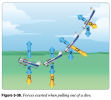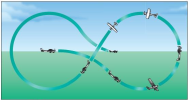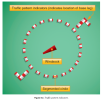KingAir1922
Filing Flight Plan
- Joined
- Dec 15, 2023
- Messages
- 16
- Display Name
Display name:
KingAir1922
I'm about halfway through the Pilot's Handbook of Aeronautical Knowledge, and it seems like I often come across sentences, paragraphs, or whole sections that have very poorly organized or disjointed thoughts. Since a lot of this is new material for me, it’s distracting and makes some things confusing. I don’t think I’ve ever had to go back and reread things to understand them as much as I have with this textbook. I'm very mechanically minded, having done well in physics, engineering, and shop classes and working as a cerpenter for years. It's not that the nature of the material is difficult for me. But, man, even Psychology was an easier read. Is it just me, or has anyone else had this experience?
Last edited:










